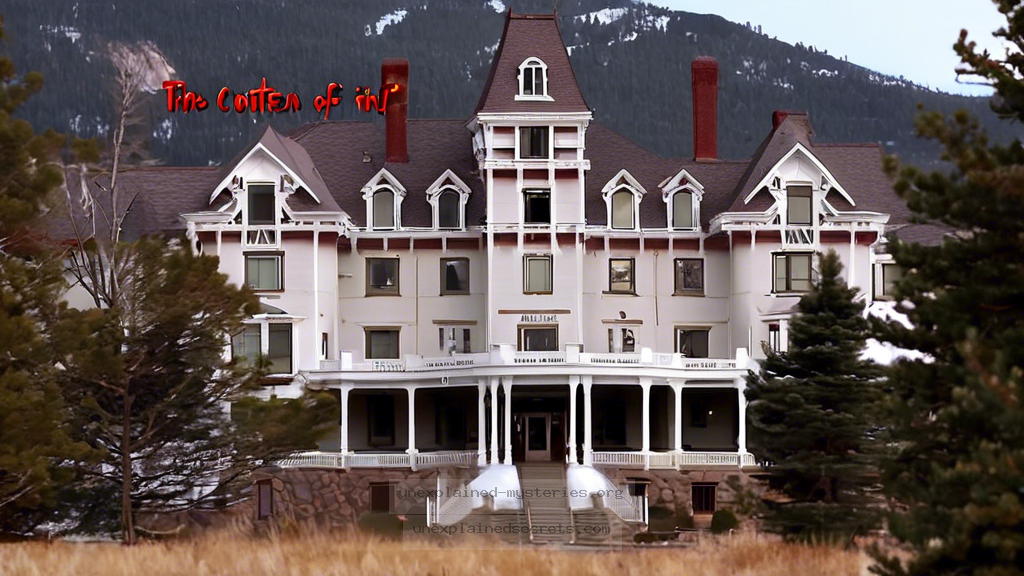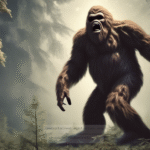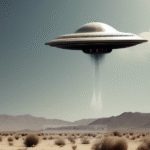What Secrets Lurk Within the Walls of the Stanley Hotel, the Inspiration for Stephen King’s ‘The Shining’?
What Secrets Lurk Within the Walls of the Stanley Hotel, the Inspiration for Stephen King’s ‘The Shining’?
The Stanley Hotel, nestled in the picturesque mountains of Estes Park, Colorado, has long captivated visitors with its stunning architecture and breathtaking views. Yet, beyond its aesthetic allure lies a tapestry woven with tales of hauntings and paranormal encounters. This iconic hotel not only served as the inspiration for Stephen King’s chilling novel “The Shining,” but it also boasts a rich history filled with unexplained phenomena and ghostly apparitions. What secrets lurk within the walls of this historic establishment? Let’s delve into the mystery and explore the haunted history of the Stanley Hotel.
Historical Context: The Birth of the Stanley Hotel
The Stanley Hotel was founded in 1909 by Freelan Oscar Stanley, a wealthy inventor and entrepreneur who sought solace from his battle with tuberculosis. The hotel quickly became a sanctuary for affluent guests, showcasing the grandeur of early 20th-century hospitality. Its distinctive architecture, characterized by its Georgian and colonial revivals, creates an inviting atmosphere that belies its haunting reputation.
However, it was not until the 1970s that the hotel gained notoriety for its paranormal activities. Stephen King, who stayed at the Stanley while seeking inspiration for his book, was particularly struck by the hotel’s eerie ambiance and its haunting tales. The subsequent publication of “The Shining” in 1977 not only immortalized the Stanley Hotel in pop culture but also drew a flood of visitors eager to experience the supernatural for themselves.
The Haunting of Room 217
One of the most notorious haunted locations within the Stanley Hotel is Room 217. This particular room gained notoriety due to a series of ghostly encounters reported by guests. According to legend, the room was the site of a tragic accident in the early 1900s when a housekeeper named Elizabeth Wilson was injured while preparing the room for guests. Since then, numerous visitors have claimed to experience her presence, with reports of unexplainable occurrences such as drawers opening and closing on their own, lights flickering, and even the sensation of being tucked into bed by an unseen force.
Other Haunted Areas: The Concert Hall and the Lobby
While Room 217 may be the most famous haunted space, other areas of the Stanley Hotel are also steeped in ghostly lore. The Concert Hall, for instance, has been reported to be the site of various apparitions, including a ghostly figure seen playing the piano. Visitors often describe hearing music when no one is present, adding to the eerie atmosphere.
The hotel lobby, too, has its share of ghostly encounters. Guests frequently report sensing a strange presence and feeling cold spots, even in warmer weather. Some have claimed to see apparitions dressed in vintage clothing, suggesting that the spirits of past guests may still roam the hotel’s halls.
Core Concepts: Theories Behind Paranormal Activity
Several theories have emerged to explain the paranormal activity reported at the Stanley Hotel. One common concept is the idea of “residual hauntings,” where the energy of past events is imprinted on the environment, replaying like a loop without any interaction with the living. This could explain the recurring experiences of guests encountering Elizabeth Wilson or hearing music from the Concert Hall.
Another theory is that certain locations, like the Stanley Hotel, may possess heightened electromagnetic fields or geological anomalies that can influence human perception and behavior. This can lead to feelings of unease or even visual and auditory hallucinations, which some interpret as ghostly encounters.
Practical Implications: Investigating the Hauntings
For those interested in exploring the paranormal phenomena at the Stanley Hotel, there are several best practices to consider. Firstly, it’s crucial to approach investigations with an open but critical mind. Document any experiences you have, such as unusual sounds, temperature changes, or feelings of being watched. Using equipment like EMF detectors, digital voice recorders, and infrared cameras can also help record potential evidence of paranormal activity.
Engaging with local paranormal groups or participating in organized ghost tours can provide valuable insights and enhance your experience. Many tours offer historical context, allowing participants to understand the stories behind the hauntings while also sharing their own encounters.
Alternative Perspectives: Skepticism and Rational Explanations
While many visitors to the Stanley Hotel report experiencing supernatural occurrences, skepticism exists within the scientific community. Some argue that ghostly experiences can be attributed to psychological phenomena, such as pareidolia—seeing patterns or faces in random stimuli—or the power of suggestion. The influence of Stephen King’s “The Shining” may also lead guests to perceive experiences through a lens of expectation, heightening their sensitivity to the unknown.
Furthermore, environmental factors such as drafts, creaky floors, and old plumbing can produce sounds and sensations that may be misinterpreted as paranormal activity. This skepticism serves as an important reminder to approach such investigations with a balanced viewpoint, weighing both personal experiences and scientific explanations.
Common Misconceptions: Dispelling Myths About Hauntings
One common misconception about haunted locations, including the Stanley Hotel, is that all reported phenomena are inherently malevolent. In reality, many experiences described by guests are benign or even comforting. The presence of spirits may simply reflect unfinished business or a lingering attachment to the location rather than a desire to cause harm.
Another myth is that only certain locations can be haunted. In truth, any space with a rich history or emotional significance can manifest paranormal activity. The Stanley Hotel is simply one of many places where the past intertwines with the present, inviting curiosity and exploration.
Future Developments: Ongoing Research in Paranormal Studies
The field of paranormal research continues to evolve, with advancements in technology enhancing our ability to investigate unexplained phenomena. New tools, such as smartphone apps designed to detect electromagnetic fields and advanced thermal imaging cameras, provide researchers with innovative ways to document their findings.
Moreover, the rise of interest in the paranormal has led to increased funding and support for studies exploring the psychological and sociological aspects of hauntings. This ongoing research may help demystify the experiences of those who encounter the supernatural while shedding light on the cultural significance of haunted locations like the Stanley Hotel.
Conclusion: The Enduring Allure of the Stanley Hotel
The Stanley Hotel remains a treasure trove of history, mystery, and the supernatural. Its haunting stories, from the enigmatic presence in Room 217 to the ghostly melodies echoing in the Concert Hall, continue to intrigue visitors and paranormal enthusiasts alike. Whether one approaches the hotel’s tales with skepticism or belief, the allure of the unknown invites exploration and reflection on the human experience with the afterlife.
As our understanding of the paranormal evolves, the Stanley Hotel stands as a testament to the enduring connection between the past and present, reminding us that some mysteries may never be fully explained but will always inspire wonder and curiosity. So, the next time you find yourself in Estes Park, will you dare to uncover the secrets hidden within the walls of the Stanley Hotel?
Other Articles
Recent Posts
- What Happened to Flight MH370? The Conspiracy Theories That Still Haunt Us
- What Secrets Lurk Within the Walls of the Infamous Trans-Allegheny Lunatic Asylum?
- What Evidence Supports the Existence of Bigfoot in the Pacific Northwest?
- What Happened to the Indus Valley Civilization? Unraveling the Mysteries of Ancient Urban Life
- Can Telepathy Be Scientifically Proven Through Laboratory Evidence?







